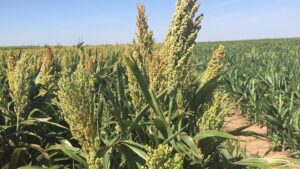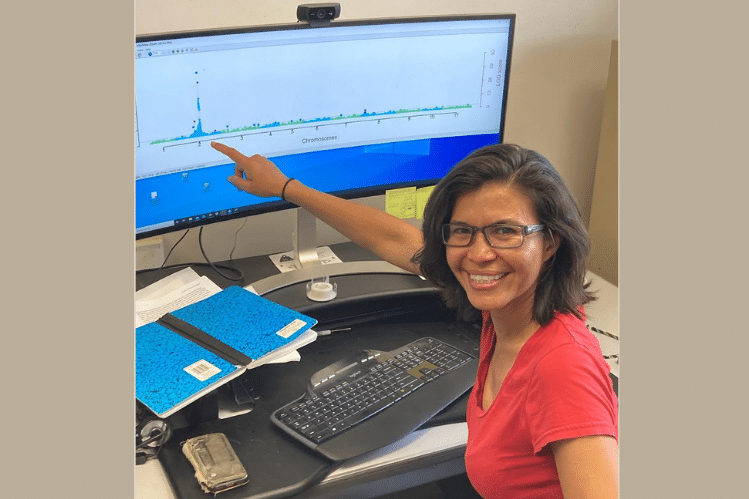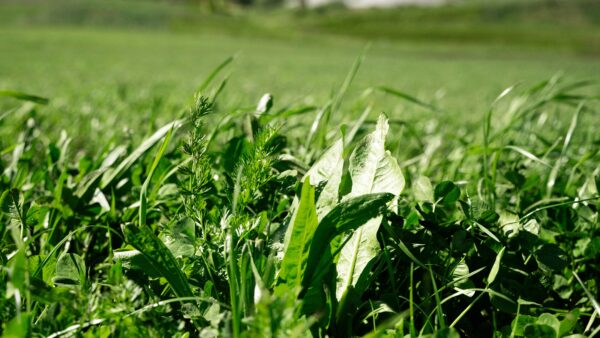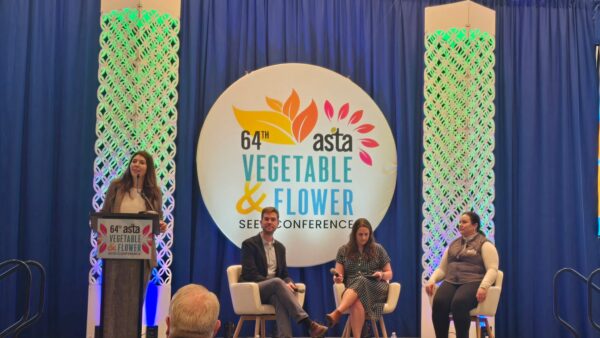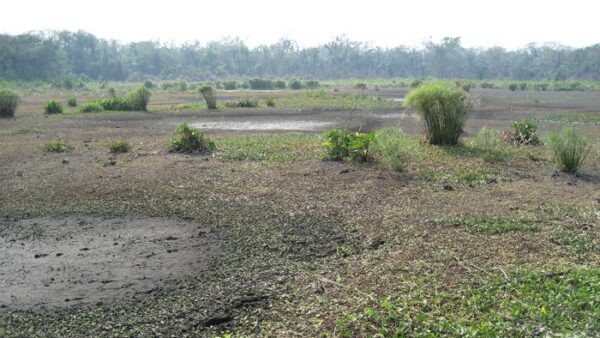The genetic architecture of adaptation outside centres of domestication of Phaseolus vulgaris and P. coccineus.
As any plant breeder knows, the key for crop improvement is the availability of crop genetic diversity. To be available for plant breeding, genetic diversity should be well characterised and the related information should be directly available to breeders, along with the tools for its exploitation.
Nowadays, the need for genetic diversity to improve our modern varieties is becoming more urgent, as we understand that agriculture has to evolve greatly in the near future. This is due to several factors, which include a significant increase in the world population and the ensuing need for food security, the production of high-quality food for human health, the need to adapt crops to marked variations in climate, and the protection and improvement of the environment.
The major challenge here appears to be the adaptation to climate change. Plant adaptation to new environments and to new climate conditions is a set of processes and mechanisms a plant species can effect to overcome susceptibility to adverse conditions, to cope with the new conditions, and to adapt to changes. Since its origin agriculture itself represented a drastic environmental and ecological change with the development of the agroecosystem that contributed to crop domestication. Domestication was followed by crop expansion associated with further environmental changes related to adaptation processes to new environments and human needs. This can be seen by comparing the distribution of wild relatives of a crop and the area of cultivation of domesticated forms, for any given crop.
For these reasons, it is crucial for plant geneticists and breeders to have a deeper understanding of the biological processes related to plant adaptation, with the major need being to identify functional elements encoded in a plant’s genome. In the context of climate change, the key aspects for plant breeding are crop diversity and genetic variability, and there is the increasing need to develop incisive strategies for sustainable agriculture.
BEAN_ADAPT is a three-year project funded through the second ERA-CAPS call, ERA-NET for Coordinating Action in Plant Sciences, entitled ‘Expanding the European Research Area in Molecular Plant Sciences II’. The main aim is to dissect out the genetic bases and phenotypic consequences of adaptation to new environments by important legumes, such as the common bean and the runner bean. The focus is on studies of their introduction into Europe from their respective centres of domestication in the Americas, and their expansion through Europe, as a recent and historically well-defined event of rapid adaptation. The project will focus on landrace accessions, as these can be associated to specific locations, with the possibility to exploit landscape genetics approaches that can be used to associate environmental variation among collection sites and genomic diversity, to tag genes involved in environmental adaptation.
Moreover, BEAN_ADAPT will develop a set of 10,000 pure lines of Phaseolus vulgaris which will be genotyped by genotyping-by-sequencing. This collection will contain a subset of a few hundred representative genotypes (200 to 500) that will also be phenotyped (in multilocation field trials, and under controlled conditions), fully re-sequenced at the genomic (10×) and transcriptomic levels with gene expression, and analysed at the metabolites level. On this basis, and exploiting the genotyping-by-sequencing data as a ‘zipper’ for all of the 10,000 pure lines, the whole genome and transcriptome will be reconstructed, along with information regarding the putative phenotypic roles of many genes.
Indeed, one of the main outcomes of the project will be the development in P. vulgaris of a catalogue of haplotypes of all the 10,000 accessions (‘HapBean’). Along with the associated genomic and phenotypic information and new seed stocks, this will represent a unique tool for plant scientists and crop breeders. Moreover, the cumulative activities that will be performed on the 10,000 pure lines will also progressively increase the amount of available information. For P. coccineus, we will also have a well-defined set of information which will constitute the foundation for the development and application of its genomic resources. These lines will be conserved and distributed to users (i.e. breeders) by the National Research Council’s Institute of Biosciences and Bioresources (IBBR-CNR) in Bari, Italy, which has already formalised an agreement with the BEAN_ADAPT consortium, and by other genebanks interested in participating in these initiatives.
The combined availability of the seeds of each accession and the related information can be used by breeders for different purposes, including:
- to search for different alleles of a gene that has a known function (function identified in the target or in a related species) and is of potential use, and to obtain a set of germplasm that has the desired alleles composition;
- to identify the most adapted genotype (e.g. a specific market class) that has a useful allele validated previously in a different genetic background, with the effect being to speed up the development of a new variety;
- to perform an association study that can exploit the genomic data available on the 10,000 pure lines; and
- to select any subset of germplasm on the basis of the data available from the project, and from the data that will be contributed by the associated partner.
Indeed, as will be described later, BEAN_ADAPT is an open project which is also willing to contribute to the development of a ‘bean community’, which can include both private and public sectors.
Strategy and Achievements
BEAN_ADAPT aims to provide the scientific community, breeders and the seed industry with knowledge of the genes, quantitative trait loci, and genetic mechanisms that contribute to the phenotypic adaptation associated with environmental conditions, along with their mapping along the reference genome. These will be useful genetic tools for geneticists and breeders for the construction of novel varieties. With the activities started in the second half of 2015, BEAN_ADAPT aims to develop an integrated approach to efficient exploitation of plant genetic resources preserved ex situ in genebanks, to maximise their use for plant genetics and plant breeding.
The molecular characterisation of a large collection from the major genebanks, including 11,500 accessions of both the common bean and the runner bean, has started. The genotyping-by-sequencing technique will be used, a procedure that identifies polymorphisms due to differences in single nucleotides (i.e. single nucleotide polymorphism markers), which are now essential tools for genetic analysis. This allows definition of the population structures of these species, and provides subsets of genotypes for phenotyping and for deeper genomic, transcriptomic, and metabolomic characterisation.
A multidisciplinary approach will be used, including genomics (e.g. sequencing of the whole genome and transcriptome, RNA sequencing techniques), population/quantitative genetics, biochemistry and plant physiology. To identify genes and metabolites that are putatively associated with adaptation, we will apply differential expression analysis, analysis of co-expression patterns, and genome-wide association studies. The genotypic information obtained from genotyping-by-sequencing, whole genome sequencing, and RNA sequencing will be used to test for signatures of selection and to identify regions of the genome associated with adaptive and important agronomic traits (e.g. flowering time, photoperiod sensitiveness, yield, and others).
Another important aspect of the BEAN_ADAPT project is promotion of the efficient use of Phaseolus plant genetic resources through the development of an integrated information system. This will be linked to genebank management and enhanced by development and characterisation of the 10,000 P. vulgaris purified lines, part of which will be deeply investigated by sequencing the whole genome, analysis of the transcriptome and metabolome, and characterisation of phenotype. BEAN_ADAPT will also develop a unified information system that will integrate the huge amounts of data being generated within the project, linking the genomic data with information on plant genetic resources. This will also facilitate data sharing, with connection of data to the European Genetic Resources Search Catalogue (EURISCO). The BEAN_ADAPT project is already participating in international initiatives on the conservation and use of plant genetic resources as DivSeek, and is actively collaborating with the International Treaty on Plant Genetic Resources for Food and Agriculture (ITPGRFA) and Crop Trust.
BEAN_ADAPT Consortium
The integration of different types of expertise, through combination of all novel tools of genomics, along with molecular and standard phenotyping, is fundamental to the activities of the project. The BEAN_ADAPT partnership involves five research groups of public European and American institutions and universities, with unique and highly complementary expertise in different fields of plant science. These include genomics, bioinformatics, metabolomics, new molecular phenotyping technologies, field trials, plant breeding, applied population genomics, evolutionary processes analysis, in addition to the largest Phaseolus collection in Europe.
Research groups from three European organisations and two U.S. universities make up this consortium, and include the following:
- The Agricultural Genetics Group, the Department of Agricultural, Food and Environmental Sciences of the Polytechnic University of Marche in Ancona, Italy. This group is led by Roberto Papa, who is also the BEAN_ADAPT coordinator. This team will contribute mostly with their expertise on Phaseolus and in applied population genomics to analyse the large amount of data that will be obtained.
- The Central Metabolism Group led by Alisdair R. Fernie at the Max Planck Institute of Molecular Plant Physiology, Potsdam-Golm, Germany. The group has in-depth expertise in metabolomics, which guarantees innovative support for the project through the integration of genomics with new molecular phenotyping technologies.
- Andreas Graner, head of the genome diversity group at the Leibniz Institute of Plant Genetics and Crop Plant Research (IPK), and the federal ex situ genebank at Gatersleben, Germany. They host the largest Phaseolus collection in Europe, and its genetic characterisation will be a fundamental tool for breeders and plant scientists.
- Paul Gepts and his laboratory at the Department of Plant Sciences, University of California, Davis, United States. They focus on the definition of the processes that have shaped the evolution of crop plants under cultivation, and in particular of Phaseolus. Gepts also has strong expertise in plant breeding, and he currently leads the UC Davis bean breeding programme, and is curator of the PhaseolusGenes database.
- Scott A. Jackson and his laboratory at the Center for Applied Genetic Technologies, University of Georgia, Athens, United States. They have broad expertise in genomics and bioinformatics, combined with up-to-date bioinformatics tools and large computational and storage resources. They also recently released the reference genome sequence of P. vulgaris.
The complementary skills and synergy between the teams of the principal investigators are key to the success of the BEAN_ADAPT project, which will also promote collaborations and integration with, and among, other research groups, the seed industry, and other stakeholders.
Associated Partners and Private Sector Involvement
BEAN_ADAPT aspires to work with ‘bean community’ members, genebanks, plant breeders, stakeholders, the seed industry, and plant and crop scientists, to form a wide collaborative network. Within this network, all can contribute to the project, while also benefitting from the data produced and the outcomes reached.
A kick-off meeting was hosted in August 2015 by the Global Crop Diversity Trust in Bonn, Germany, introducing and disseminating the project to those potentially interested as associated partners. Over 20 representatives from universities, institutes and companies participated, showing interest in collaborations within BEAN_ADAPT as associated partners. Participants also presented their work and outlined potential contributions to the project.
To date, over 25 groups from institutes and companies all over the world (i.e. Europe, Canada, South Africa, Brazil) have joined BEAN_ADAPT as associated partners. These groups offer cooperation and/or association within specific activities connected to the mission and interests of the associated partner. These activities are related to contributions to phenotyping activities, to offers of germplasm, to analysis of seed and pod compositions and nutritional values, to tests for biotic and abiotic stress, and to dissemination of results and achievements to the public.
For example, BEAN_ADAPT is currently collaborating with many associated partners including public and private institutions as the International Centre for Tropical Agriculture (CIAT), which is contributing germplasm, field trials, and phenotyping; the European Seed Association, which is helping with dissemination; IBBR-CNR (Italy) will conserve and distribute the BEAN_ADAPT germplasm to users; Starke Ayres Seed, from South Africa, will collaborate with tests to screen for biotic and abiotic stress as well as with small genotyping activities; and Gautier Semences (France) which will contribute in phenotyping activities.
Organisations, institutions, stakeholders, seed companies, growers and research groups from the private sector can be involved with provision of financial support for specific initiatives, assistance with testing germplasm, and provision of plant material to be included in BEAN_ADAPT.
BEAN_ADAPT’s contributions will further legume research and production by the consideration of the importance of protecting the environment, the promotion of increased use of systems involving legumes—which offers cheaper and more sustainable alternatives to conventional practices due to the symbiotic capture of atmospheric nitrogen, thus reducing the use of industrially-produced nitrogen.
This project is particularly relevant to the future challenges of plant breeding and to identify genes/quantitative trait loci for important agronomic traits. This will be crucial for plant breeding and for obtaining new varieties, which will contribute to food security in a world that is in demographic expansion, and in the context of climate change.
Editor’s Note: For contact information: Elisa Bellucci at e.bellucci@univpm.it or info@beanadapt.org. BEAN_ADAPT has been considered a model as a high value project which aims to integrate technology transfer with the availability of germplasm directly to farmers for pre-breeding and breeding programmes. The availability of germplasm, information and data will endorse the multilateral system on access and benefit sharing established by 140 countries through the International Treaty on Plant Genetic Resources for Food and Agriculture.
The Platform for the Co-Development and Transfer of Technologies of the International Treaty on Plant Genetic Resources for Food and Agriculture is a supporting initiative to the Programme of Work on Sustainable Use of Plant Genetic Resources for Food and Agriculture, which includes in its mission statement, among others, new elements including the following:
- a vision of technology co-development and transfer;
- the reference to technologies applicable to the germplasm information domain, for instance, genomics data generation, storage and use, in support of the Global Information System of Article 17 of the ITPGRFA;
- the value chain approach, according to which the platform would support technology co-development and transfer along the entire value chain, from the distribution of germplasm for research and breeding to the release of new plant varieties to farmers.
2016 INTERNATIONAL YEAR of PULSES and THE IMPORTANCE OF BEANS
In 2013, the United Nations declared 2016 to be the International Year of Pulses, also known as grain legumes. Pulses include crops such as dry beans, dry peas, chickpeas and lentils, which are all rich in protein, fibre and vitamins. Worldwide, these are recognised as part of a healthy diet, and they also have a fundamental role in food security.
Along with other legumes, beans are very important crops for global food security, as they represent a crucial source of protein for poor farmers in Latin America and eastern Africa. In Italy, beans are also known as the ‘meat of poor people’, and they play an important role in the diet of the underprivileged from Europe’s rural areas, particularly for the prevention of malnutrition.
Beans are a key crop in sustainable agriculture. As in most agricultural settings, the primary source of biological fixed nitrogen (about 80 per cent) is through the soil bacteria Rhizobium-legume symbiosis, which reduces the use of fertilisers. Beans also have very high nutritional quality, and contain many compounds that are known to offer health benefits, such as fibre and antioxidants, which also have important roles in the prevention of several diseases.
Phaseolus spp., and in particular the common bean, Phaseolus vulgaris L., represent the most important grain legumes for direct human consumption worldwide. Furthermore, there is increased interest in pulses as an alternative source to animal products for food protein, and also for health benefits related to regular legume consumption. In Europe, the common bean is the main crop grown for plant protein for food, and in 2012, the European Union imported 501,058 tonnes.
P. vulgaris is also an economically important crop in the United States, where 1.7 million acres of dry beans were planted in 2012, with a farm-gate value of $1.4 billion. Phaseolus spp. have important roles in sustainable farming systems because of their association with the bacteria that fix atmospheric nitrogen, thereby enriching soil.
Both common bean (P. vulgaris) and runner bean (P. coccineus) are cross-compatible sister species with different characteristics that are related to their mating system, their origins and evolution, and their environmental distribution. They represent a very useful tool to investigate the genetic basis of adaptation, following their dispersal to and throughout Europe from their centres of origin in the Americas. They can represent a model for major environmental and socio-economic changes in the future, such as increases in temperature, variability of rainfall, and new consumer preferences.



